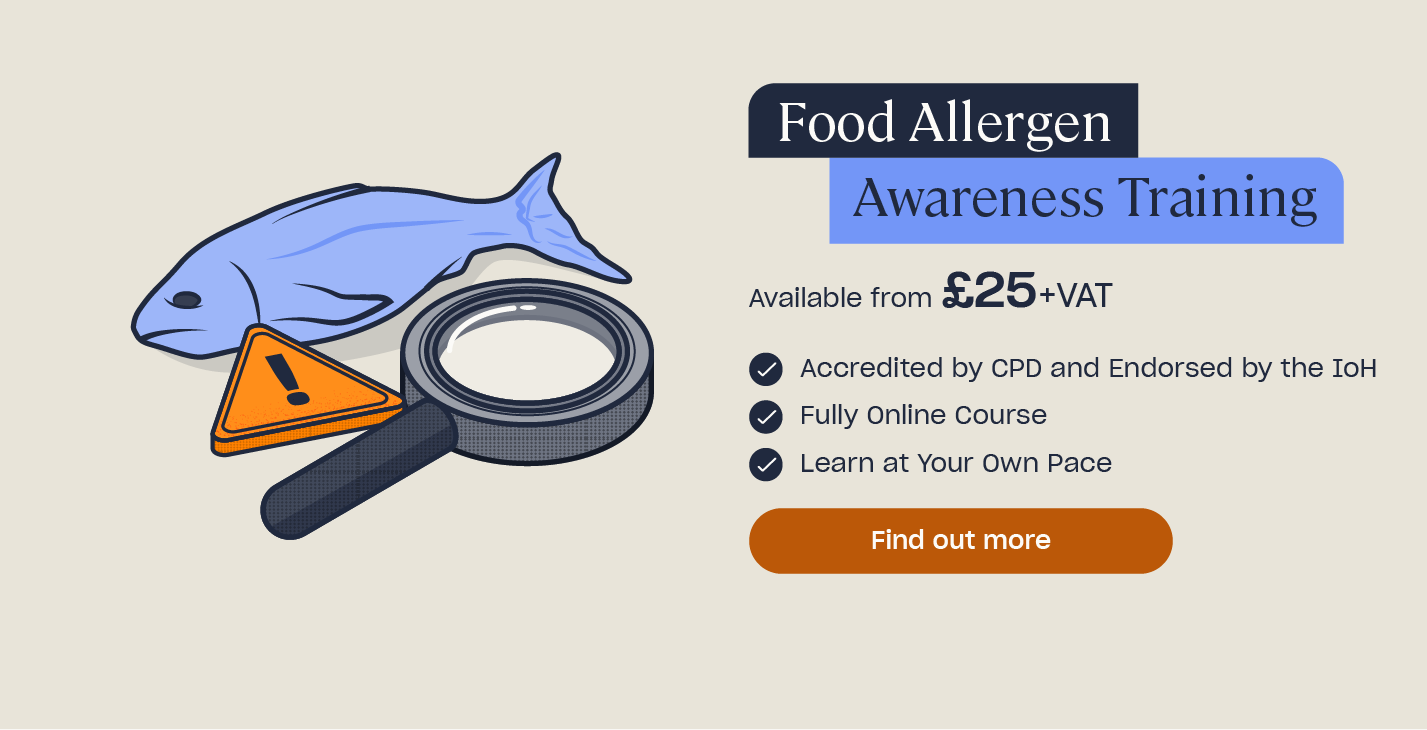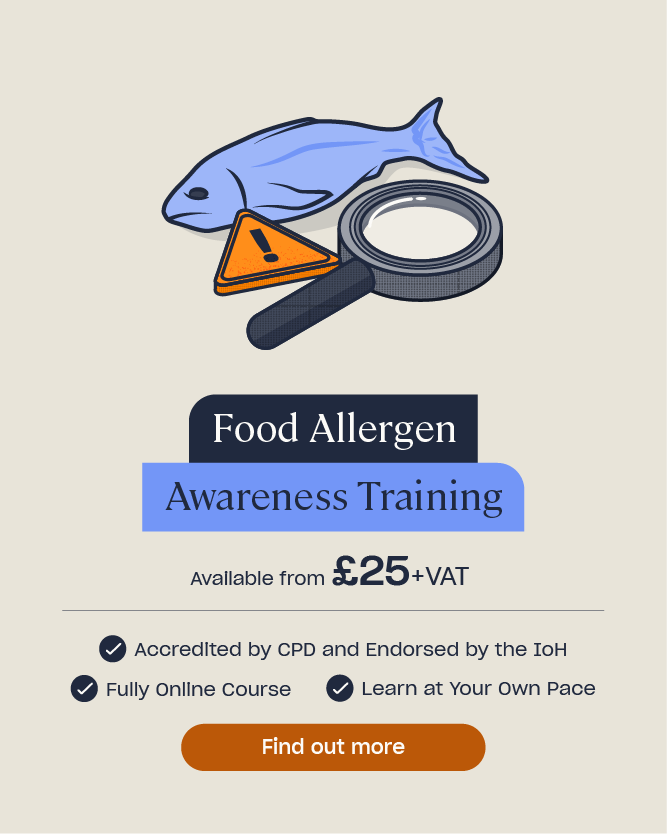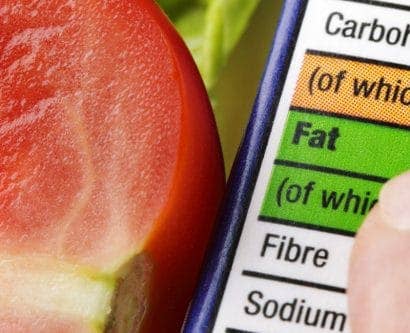What are ‘Allergy Free’ Foods?
Food hypersensitivities such as allergies, autoimmune diseases and food intolerances affect many people. In the UK the estimate is that 1-2% of adults and 5-8% of children have a food allergy. This equates to approximately 2 million people. A further 600,000 people suffer with coeliac disease and many more have other undiagnosed hypersensitivities. Whilst the law identifies 14 food allergens that must be declared in our food products, anybody can have an allergy to any food.
Allergies are unique to the individual and those who experience food allergies and intolerances will likely know which foods they can safely consume which don’t trigger a reaction for them. We call these ‘allergy free’ foods and they are unique to each individual.
This article will explore what allergy free can mean, provide inspiration and knowledge on what foods may be allergy free and give guidance on ensuring food safety.
What Does ‘Allergen Free’ Mean?
Allergen free is a term used by allergy sufferers to refer to food that does not contain any of the ingredients that cause an allergic reaction for that person. However, because allergen free foods are unique to the individual, there is no widely accepted or set definition for what allergy free means, rather, each person will have a list of their own allergy free foods. You might see the term used to refer to foods which do not contain any of the 14 named allergens in their ingredients list and you may also hear allergen free called ‘allergy friendly’ or ‘allergy safe’.
The 14 named allergens are:
- Celery
- Cereals containing gluten
- Crustaceans
- Eggs
- Fish
- Lupin
- Milk
- Molluscs
- Mustard
- Nuts
- Peanuts
- Sesame
- Soya
- Sulphites and Sulphur Dioxide
Those with allergies should always be given the right information when shopping in retailers or when eating out at catering establishments. As a catering business, it is important to offer menu items that can be deemed allergy free to customers and to give wider choices on your menu. Allergy free foods and substitutes can be used to replace common allergens in your menu items and recreate dishes that may already be familiar. This enables customers with allergens to be included and gives them choices when eating in your business.

However, it is essential that you are transparent with all the ingredients in a dish, and that you do not declare something as allergy free for all. Effective control of allergens through staff training, communication with customers and applying traceability procedures to your menu items and ingredients is paramount to the safety of your guests and your business’s success.
List of ‘Allergy Free’ Food
When thinking about creating allergy free, or free from allergen, menu items, you must consider all of the ingredients in the different components of the dish and the way it is prepared. Creating simple dishes with fewer ingredients should help limit the chances of them containing ingredients that people are allergic to. However, it isn’t always that easy and you must carefully check all your ingredients for allergens. We’ll look at food safety with regard to allergens further on in this article, but for now, let’s take a look at some ideas for allergy free foods.
As we’ve said above, allergy free has a different meaning for different people, and you must declare all ingredients in a product so that the customer can make an informed decision about whether the item is allergy free for them.
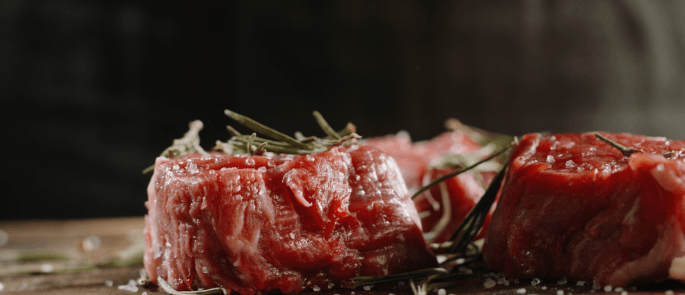
To help you think about dishes that could be allergen free, we’ve put together some ideas for starters, mains and desserts that don’t contain any of the 14 named allergens.
Starters 
Beef beetroot horseradish
This simple starter is really quick to prepare, lay thin slices of beef bresaola and top with a beet salad comprising julienne baby beetroots dressed with olive oil and horseradish sauce, garnished with watercress. If you buy pre-made horseradish sauce, make sure you use a vegan one to avoid any dairy and check it doesn’t contain any other of the 14 named allergens.
Soup
Soup is a really easy starter to make allergy free as there are so many options! However, most soups use a mirepoix base of onion, carrot and celery so in order to make your soup free from the 14 named allergens, you’ll have to omit the celery. However, not all recipes use this traditional method, and soups can be just as tasty without it. Some options could be tomato soup, chicken broth soup and sweet potato and ginger soup. Avoid any creamy-style soups as the cream content will mean the dish contains dairy – and that’s a no for our free from the 14 named allergen recipes. You can also offer gluten-free bread alongside your soup to ensure that those with gluten allergies and intolerances can enjoy your dish.
Main course 
Chicken chorizo rice
This main course is deliciously smokey and perfect served with fluffy rice. To make, pan cook the chicken fillets, add in slices of chorizo and cook through. Serve with chopped cherry tomatoes and salad leaves dressed in red wine vinegar, and top with rough-chopped black olives and olive oil.
Ribeye steak mushrooms white beans rosemary
Steak is a great option for an allergy free menu dish, as you can let the favour of the meat speak for itself. This recipe uses rosemary and garlic to flavour mushrooms and white beans, creating a delicious stew-like accompaniment to your steak.
Chicken summer salsa
This recipe does require you to marinade the chicken for a few hours, or overnight, but the flavour is worth the prep. To prepare, marinate the chicken with red chillies, garlic cloves, parsley, juice and zest of a large lemon, olive oil, honey and paprika. To cook, sear the chicken in a hot griddle pan, then oven bake for 25 minutes until cooked through. To serve, assemble the summer salsa by dicing tomatoes, spring onion, cucumber, coriander, the zest and juice of a lime, olive oil, balsamic vinegar and a pinch of salt and pepper.
Desserts 
Think about substitutes here, using gluten-free flour and gluten-free recipes can allow you to create familiar sounding items, such as gluten-free cakes that are allergy free for your customers. Coconut milk is a great alternative to dairy and gives a really nice flavour and consistency to some puddings. Consider exploring vegan options for puddings as the vegan alternatives to traditional ingredients can work just as well.
Boozy pears coconut ice cream
This recipe simply requires a tin of pear halves, rum, vegan chocolate and coconut (dairy-free) ice cream. Poach the pears in their juice and the rum, reducing it down to syrup. Remove the pears from the pan and place them on the plates. Add the chocolate to the syrup and once melted, mix it up and pour over the pears. Garnish with coconut ice cream and serve.
Vegan vanilla panna cotta
This vegan recipe uses coconut milk and coconut cream instead of traditional milk and cream, cornflour as the thickening agent and agar-agar powder as the setting agent. It is extra delicious served with a mango and lychee coulis.
Need a Training Course?
If you want to extend knowledge of food allergens in your business, why not take a look at our Food Allergen Awareness Training which is designed to ensure learners have a thorough understanding of allergens and helps food handlers identify and label allergens correctly in order to comply with allergen laws and keep customers safe.
How to Ensure Food Safety Regarding Allergens
As we’ve mentioned, effective training of staff so that they can manage all customer’s needs is vital. It is also essential that there are effective control measures within your business to ensure that the ingredients and allergens listed for each menu item are accurate.
For instance, pre-cut chips often come coated in flour to prevent them from sticking together in the packet, and to ensure a crispy finish in the fryer – but flour contains gluten, which is one of the 14 named allergens, and as such it must be declared on your menu. Similarly, items you might not expect to contain allergens, do. For example, breadcrumbs can contain dairy and egg in the mix, and again, this must be declared on your menu. In addition to allergens being in the products themselves, you must also be aware of cross-contamination.
Preventing Cross-contamination
Cross-contamination can occur outside of your business, for example, a curry sauce you buy may be manufactured on the same line as a satay sauce – which contains peanuts. The manufacturer should inform you of the risk of peanut contamination from the satay sauce to the curry sauce and you must be aware of this so that you can reliably inform your customers.
Cross-contamination can also occur within your premises, through the way you prepare dishes, contamination of the prep area and staff error. Something simple such as deep-frying your gluten-free chips in the same oil as the breaded fish can lead to gluten contaminating the chips – and the menu item you thought was safe for those with gluten allergies no longer is.
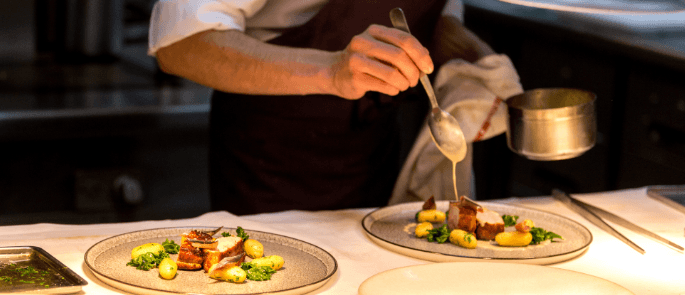
Other steps that help avoid cross-contamination in the kitchen include making sure staff are washing their hands effectively, that they are wearing correct and clean garments when preparing allergy free food items and that they use the correct equipment – many businesses will use different colour-coded chopping boards and utensils to signify allergen free food prep areas. Similarly, food preparation areas must be thoroughly cleaned before and after preparing a meal that is allergy free and all staff should follow procedures to ensure safe food handling and avoid cross-contamination.
Following the tragic deaths of Natasha Ednan-Laperouse, Owen Carey and Celia Marsh among many others, great steps have been taken in raising awareness and enforcing accountability in the food industry regarding the devastating impact that anaphylaxis caused by ingesting allergens can have on people’s lives. As a manager of a catering establishment, you have a duty to protect your customers and you must continually monitor your food safety procedures and take appropriate measures so that you can manage any potential allergenic risks in your business. To learn more about what Natasha’s Law means for your business, read our article.
Another way to manage the risks in your business is to make use of an allergen risk assessment. An allergen risk assessment is a way of determining the potential allergenic risks in your business. It can assess whether the controls you currently have in place are efficient. It also gives you the opportunity to identify any areas that need improving in order to keep your customers safe. You can read more about how to assess allergenic risks and make use of our free downloadable resources, in this link to our Food Allergen Risk Assessment.

We hope you have found this article informative and useful, and that you have a better understanding of what allergy free can mean to your customers. We hope also it has given you some food for thought and inspiration on what allergy free dishes you could offer in your restaurant. For any more information, feel free to get in touch. High Speed Training offers a wide variety of courses and resources that can help.
Further Resources:
- Food Allergen Awareness Training
- Food Allergy Awareness Quiz
- What Does Natasha’s Law Mean for My Business?
- Health and Safety in the Kitchen Quiz
- Recognising Oral Allergy Syndrome (Pollen Food Syndrome)
- Food Allergy Chart Template for Hospitality
- What are the Four Types of Food Contamination?
- Food Allergies: Myth Vs. Fact
